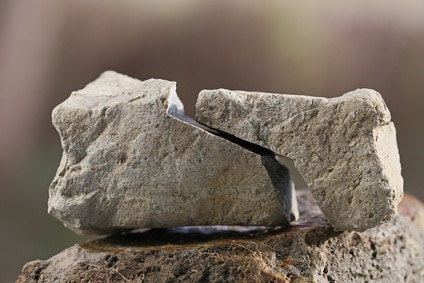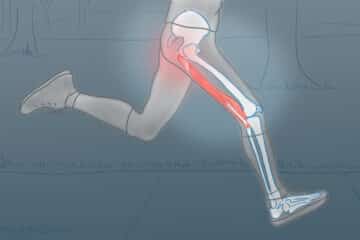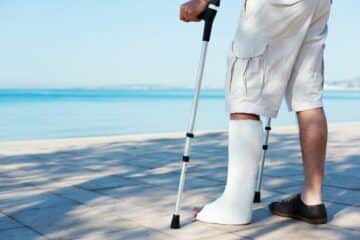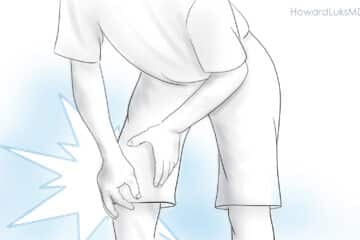
Stress fractures are simply a consequence of being active. Our bone is a living tissue. It responds to stress by becoming harder and thicker. When the activity we perform exceeds the capacity of our bones ability to handle the stress, a fracture will occur.
Certain stress fractures are more common with various activities.
- The shoulder of a throwing growing athlete
- The elbow of a throwing growing athlete
- The tibia or shin of a runner
- The metatarsals of a runner.
- The hip of a runner
Stress fractures begin at a microscopic level. The tiny little scaffolds within the bone start to breakdown. And the lack of “rest” means the process is going to continue to progress.
Early in the stress fracture process many people are unaware that something potentially serious is happening. The pain is usually not severe. Runners will notice pain in their groin, shin or foot after a run. Throwers might see a drop in the number of pitches they can throw at a certain velocity. This might be the earliest stage of a stress fracture —something we refer to as a stress reaction. If caught at this stage, then healing will be faster than if a fracture is allowed to occur.
Later on, running, throwing or weight bearing exercises will become painful. At this stage the stress fracture has likely occurred.
Stress fractures of the hip are an urgent manner. See your physician immediately. Femoral neck stress fractures are rare, but they must be managed with urgency. If this fracture is allowed to displace there could be very serious long term consequences.
Stress fractures elsewhere need to be evaluated, but less emergently.
Most stress fractures, if caught early will heal uneventfully. Very few stress fractures will require surgery.
Getting back to your activities following a stress fracture is a reasonable goal. But you must give the fracture time to fully heal — and then you must return to your prior level of activity very slowly. Pushing it too hard, too fast will result in a recurrence of the fracture.














Dr. Luks,
I don’t know here to best leave a question, so I am doing so here.
I am a 50 y.o. male. I stay fairly athletic mainly with hiking, vigorous yoga and also tennis 2-3 weeks (2 hours/session). As background, I played high school tennis, took 15+ years off and then returned to the game 12 years ago and experienced rotator cuff pain. At the time, I got an MRI and the focus was more on the labrum than the cuff. In the end, with a few false starts (meaning getting back to the court too early) after 2 cortisone shots, no tennis and physical therapy, I recovered and have played very regularly in the intervening decade pretty much without incident. I have had periodic, occasional “soreness” in the shoulder which I took as a sign of over-playing to which I would respond with by backing off for a few weeks and it was never more than that.
In December of last year (2015), this type of soreness returned. We were about the head off to NYC for a trip (I live in LA), so it was easy to take two weeks off. Upon returning home, I hit the court 3x over New Years weekend and my shoulder (especially under the deltoid) felt very tweaked. It was not as bad as in 2002 (when I could barely hold a toothbrush) but definitely no tennis.
I saw an orthopedist, and have gotten an MRI which he said showed a fair amount of wear and tear, biceps tendon was flattened out somewhat significantly, calcification, pockets of fluid and either a high-grade partial tear or a full tear (I guess of the supraspinatus). I am basically fully functioning except for the two most important things to me beside my wife and daughter: playing tennis and doing certain yoga poses.
The plan now is to try PT and NSAIDs for a few weeks and then revisit, though my doctor seemed inclined to think that I was good candidate for surgery.
I guess my questions to you are:
1) I am worried that at my “advanced” of 50, there is a limited upside (and lifespan for my shoulder) in even the best case arthroscopic surgery scenario. I am pretty sure I could manage to live fully (except without tennis, or helping my daughter movie into her dorm room in 6 years : )) without the surgery so I am wondering what the odds really are that if all turned out well, that I could play 3x/week competitive tennis. I guess my question is– is it worth it? I know this is sort of a ridiculous question but maybe you have some perspective to give on it.
2) I am so desperate for the tennis court that I got a pro to teach me to play as a lefty for a lesson. A huge challenge, to be sure, but kind of intriguing to me– a zen like exercise in being a beginner again. I’m wondering about getting an MRI out of curiosity on my left/good shoulder. I wonder how much of the degradation is age-based versus repetitive-motion… do you ever have patients who get an image of their other arm?
3) Given what I’ve told you, is there a chance that the PT and NSAIDs will kick in and help over the course of the next 4 weeks (NSAIDS only for 10 days)? At the moment I am feeling rather hopeless.
Thanks for your great site and your generosity in sharing information!
PT stands a good chance of helping. Also read the posts on rotator cuff tendinosis for more background info.
Good Luck